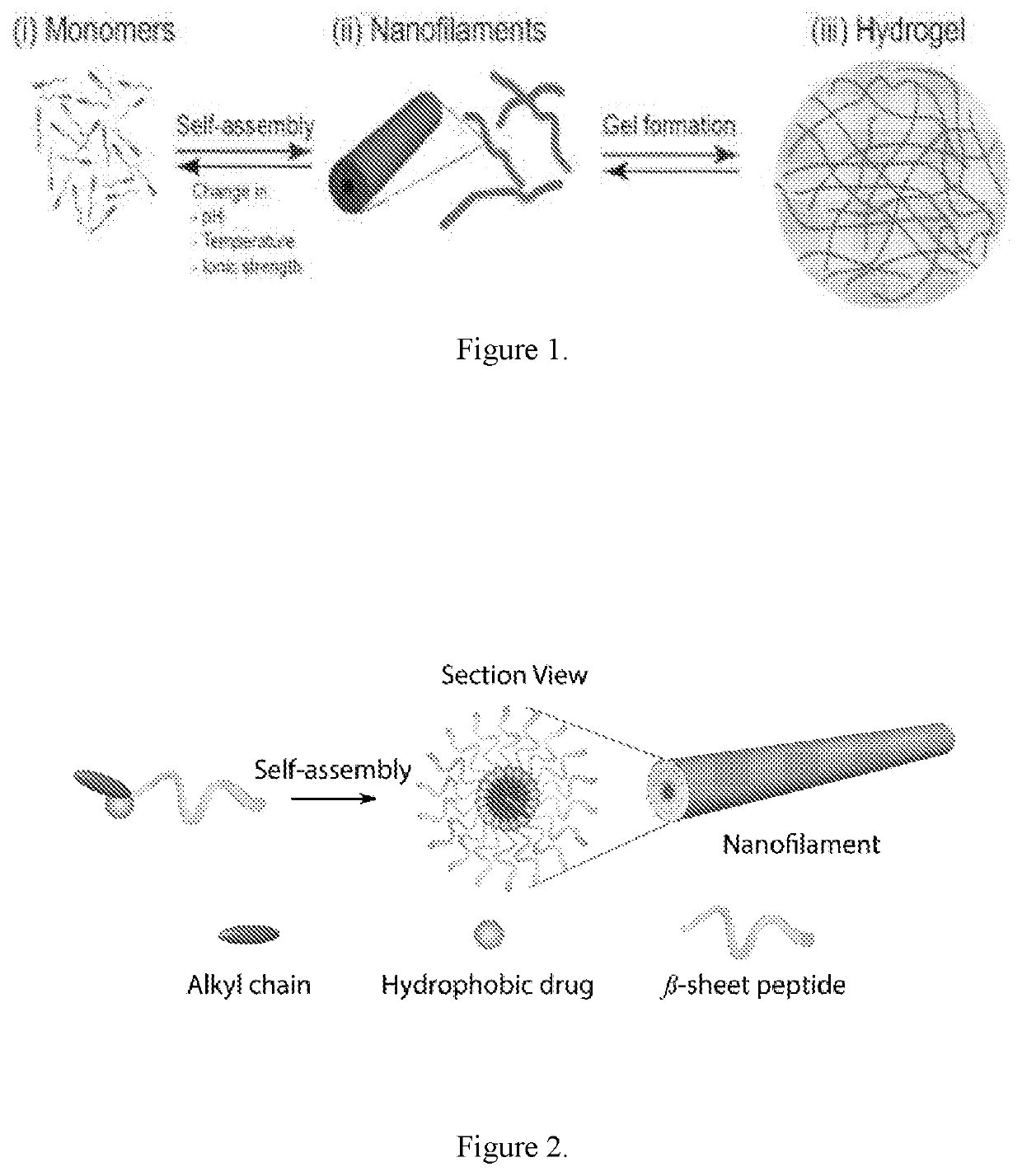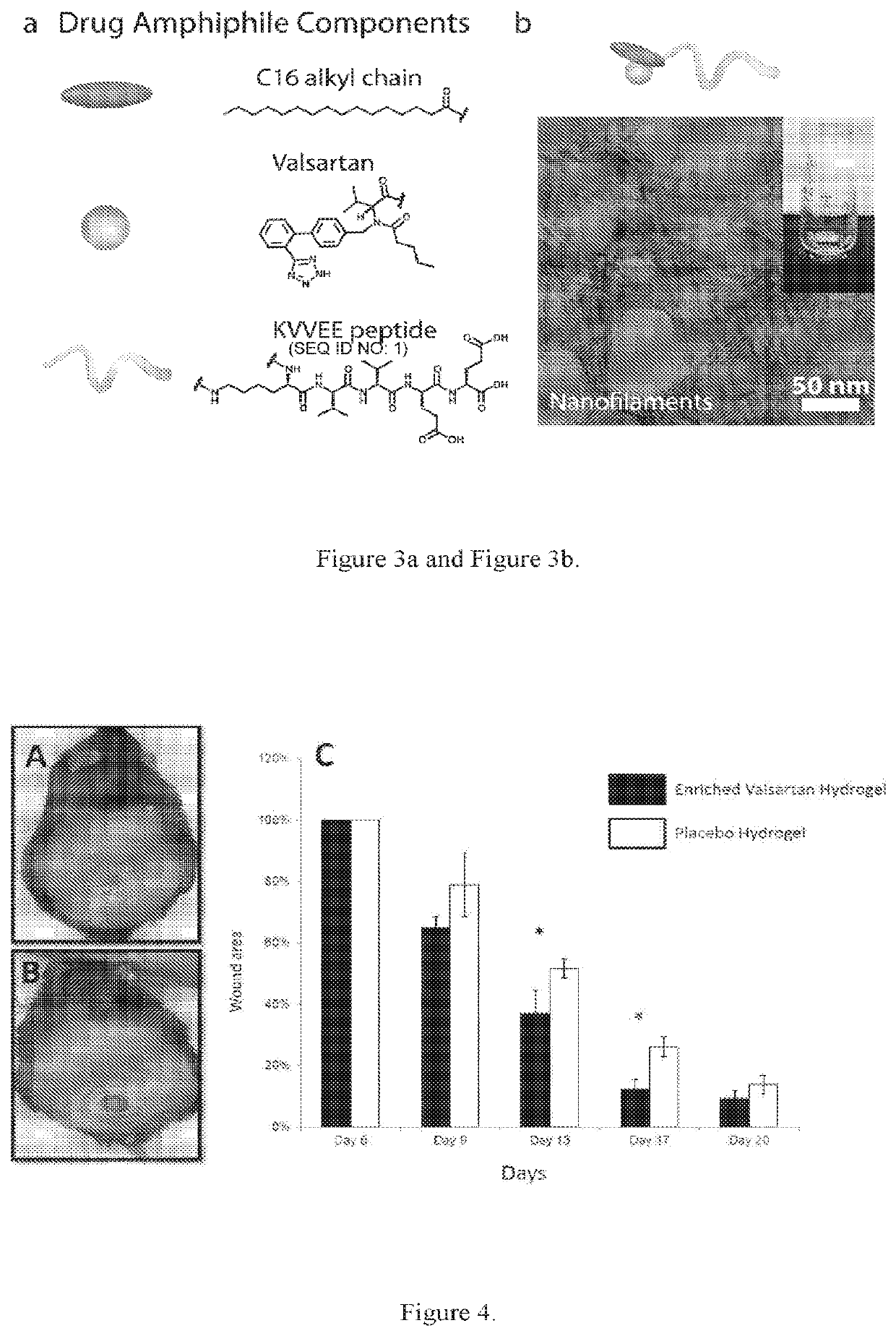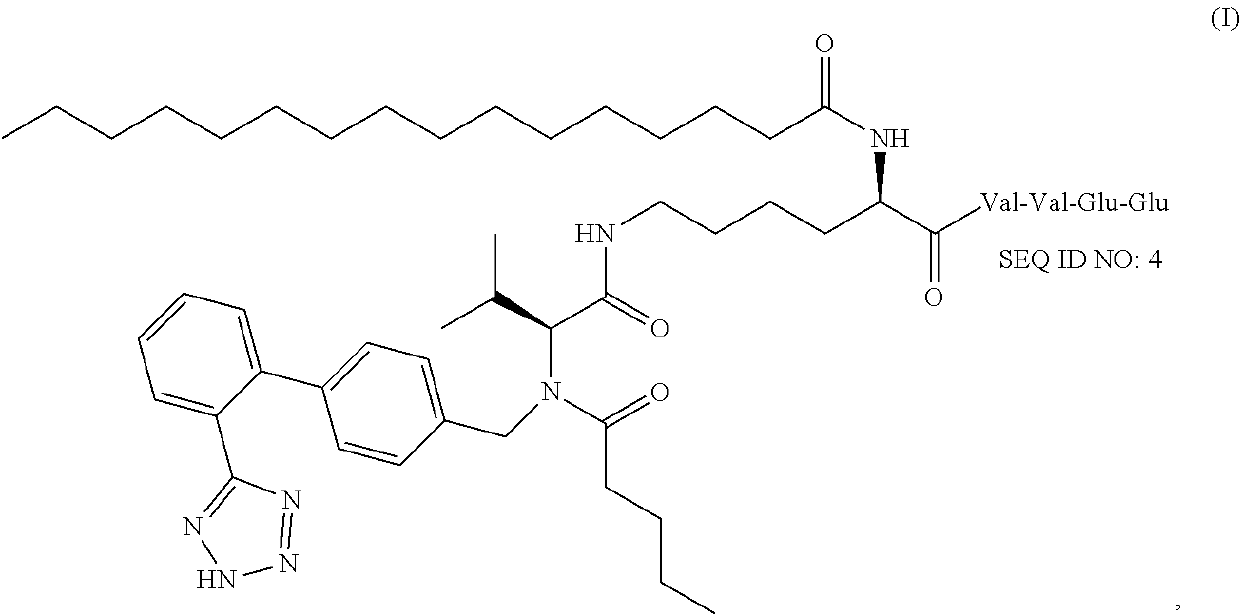Supramolecular hydrogels containing angiotensin receptor blockers for targeted treatment of diabetic wounds
a technology of angiotensin receptor blocker and supramelecular hydrogel, which is applied in the direction of heterocyclic compound active ingredients, drug compositions, aerosol delivery, etc., can solve the problems of major obstacles impeding the therapeutic use of angiotensin receptor blockers in wound healing, and many biological processes critical to wound healing
- Summary
- Abstract
- Description
- Claims
- Application Information
AI Technical Summary
Problems solved by technology
Method used
Image
Examples
example 1
Valsartan Amphiphile
[0170]A valsartan amphiphile was synthesized using palmitic acid (C16) as the hydrophobic moiety (Element 2), a β-sheet forming peptide sequence KVVEE (SEQ ID NO:1) as Element 1, and the antiotensin receptor blocker valsartan as Element 3 (FIG. 3a). The three elements are linked together using lysine as the junction. The synthesis was done using solid phase peptide synthesis protocol and the compound was purified using reverse HPLC and the expected molecular weight was confirmed by MALDI.
[0171]In pure water or PBS, the valsartan amphiphile sponstaneously associated into filaments, as visualized in FIG. 3b by transmission electron microscopy (TEM). TEM reveals that these filaments are approximately 10 nm in diameter and tens of micrometers long. At higher concentrations (typically above 0.5% by weight), the valsartan filaments will entangle into a self-supporting gel.
[0172]The peptide AcK(Mtt)VVEE-OH (AcK(Mtt)(SEQ ID NO: 6)-OH) was synthesized using AAPPTEC Focus ...
example 2
sure Experiments
[0173]The wound healing experiments discussed herein focus on revascularization, histology, and molecular measurements. After wounding, mice were randomly assigned with daily valsartan 1% gel, one time valsartan hydrogel and placebo gel (i.e., without the valsartan moiety). The mice were monitored daily for health status, and measurements of the wound were taken and recorded every other day until all wounds were completely closed. Wound closure measurements, tensile strength measurements and histology study were performed to collect morbidity and mortality information on a daily basis from the time of wounding.
[0174]Animal Testing:
[0175]The efficacy of 1% Valsartan enriched scaffold was demonstrated as compared to regular placebo gel in a diabetic mouse wound healing model through determining the difference in time to closure of a standardized 8 mm back wound.
[0176]Design Overview:
[0177]8 week old BKS.Cg-m+ / +Leprdb / J (dbdb) female mice were utilized for these studies...
PUM
| Property | Measurement | Unit |
|---|---|---|
| thickness | aaaaa | aaaaa |
| size | aaaaa | aaaaa |
| mitochondrial energy production | aaaaa | aaaaa |
Abstract
Description
Claims
Application Information
 Login to View More
Login to View More - R&D
- Intellectual Property
- Life Sciences
- Materials
- Tech Scout
- Unparalleled Data Quality
- Higher Quality Content
- 60% Fewer Hallucinations
Browse by: Latest US Patents, China's latest patents, Technical Efficacy Thesaurus, Application Domain, Technology Topic, Popular Technical Reports.
© 2025 PatSnap. All rights reserved.Legal|Privacy policy|Modern Slavery Act Transparency Statement|Sitemap|About US| Contact US: help@patsnap.com



